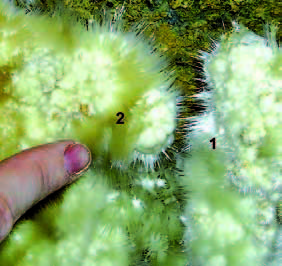The Relationship Between Cave Minerals and H2S - Rich Thermal Waters along Cerna Valley (SW Romania)
DOI:
https://doi.org/10.3986/ac.v38i1.135Povzetek
Within the Cerna Valley in southwestern Romania, over a 100 caves were formed in the Jurassic and Cretaceous limestone that outcrops on the valley walls. Three aspects are prominent when entering most of the caves in this region: the presence of considerable gypsum deposits, the amount of guano, and the cave temperature. High temperature anomalies are uncommon in the cave environment. In certain caves in the lower part of Cerna Valley, however, one can measure air temperatures as high as 40°C. This situation is due to the presence of thermal water pooling or flowing through the caves or to the hot steam that rises along fractures from deeper thermal water pools. As a result, these caves provide a unique set of conditions that allowed for the deposition of a suite of unusual minerals. This study presents the results of fifty-seven mineral samples that were investigated by means of X-ray diffraction, geochemical, Fourier-transformed infrared spectroscopy, and scanning electron microscope analyses with the scope of linking the cave minerals with likely hypogene speleogenetic processes. Here we document the occurrence of twenty-two secondary cave minerals, among which, apjonite and tamarugite are the first recorded occurrences in a limestone cave environment. The minerals fall into three distinct associations: sulfate-dominated (Diana Cave), phosphate-dominated (Adam Shaft), and sulfate-phosphate-nitrate-rich assemblage (Great Sălitrari Cave). Additional isotopic measurements (δ34S) performed on sulfate speleothems contribute valuable information on both minerals and cave origins.
Prenosi

Prenosi
Objavljeno
Kako citirati
Številka
Rubrike
Licenca
Avtorji jamčijo, da je delo njihova avtorska stvaritev, da v njem niso kršene avtorske pravice tretjih oseb ali kake druge pravice. V primeru zahtevkov tretjih oseb se avtorji zavezujejo, da bodo varovali interese založnika ter da bodo povrnili morebitno škodo.
Podrobneje v rubriki: Prispevki




